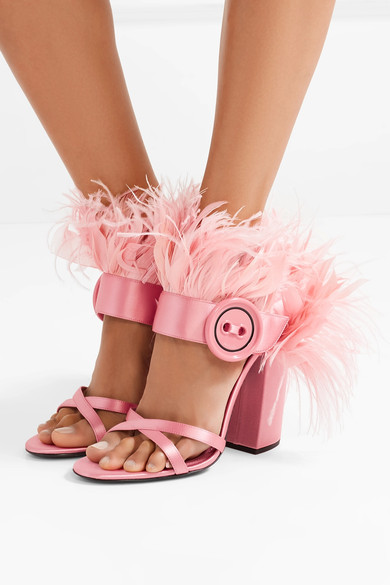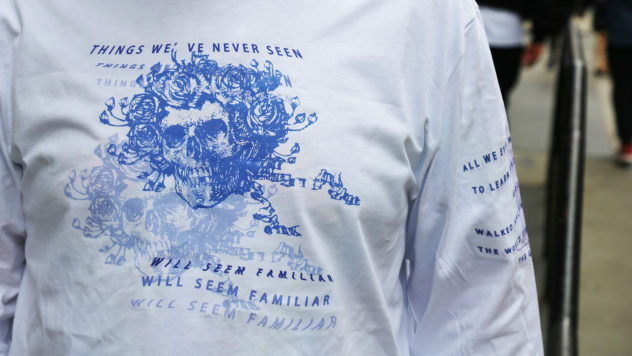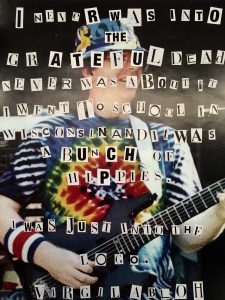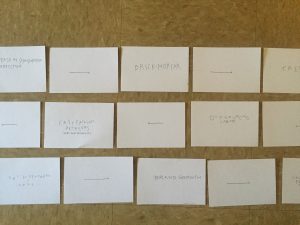 For the final project in Drawing/Imaging, students were given the freedom to create their own concept/project, so long as the proposal incorporated both analog and digital elements.
For the final project in Drawing/Imaging, students were given the freedom to create their own concept/project, so long as the proposal incorporated both analog and digital elements.
After being tasked with this assignment, I knew almost immediately that I wanted to create some sort of fashion illustration. I’ve always enjoyed creating fashion illustrations by hand, but after taking Alaiyo’s class, I learned how to create digital illustrations by way of Illustrator. Of all of the tangible skills I’ve learned during my first year at Parsons, mastering Illustrator has been by far the most rewarding and exciting for me. After a conversation with Alaiyo, I ultimately decided that I would create two separate shoe illustrations — one analog, and one digital. The two illustrations would depict two different pairs of shoes that I identify strongly with.
As someone who wants to pursue a career in the fashion industry, I’ve always been frustrated by the trivialization of what it means to enjoy and appreciate clothing. I once had a family “friend” say to me, “you want to go into fashion? What, was engineering too difficult for you?” No, I’m not kidding. That literally happened, and three years later, I still replay that condescending remark in my head over and over and fantasize about the snarky responses my young self had to bite her tongue to refrain from uttering out loud. Admittedly, there is nothing I hate more than when I am looked down on or perceived as superficial for demonstrating an interest in fashion. I have always felt strongly that one’s clothing should tell a story about the person who wears them. Clothes should function as an extension of one’s values, beliefs, and character. Andy Warhol once cleverly quipped, “I am a deeply superficial person.” In one of my favorite fashion documentaries, The First Monday in May, Andrew Bolton (the chief curator of the Costume Institute at the Met) suggests that Warhol’s proclamation also applies to fashion, and I think he’s absolutely correct. Fashion, in and of itself, is deeply superficial; in a literal sense, it consists of what exists only on the surface. But clothing, when presented and accumulated in the right manner, is a way for us to tell the world about ourselves without actually saying anything at all.
My sartorial preferences (especially when it comes to shoes) are, in many ways, an extension of my character. I consider my shoe drawings to be much more than just fashion illustrations; I consider them to be self portraits.
I also consider fashion a form of storytelling. One of my long-term goals is to one day create a book that addresses the relationships I have with pieces in my wardrobe and how these pieces function as tangible reminders of specific moments or periods in my life. I wanted the two illustrations for my final project to function as preliminary exercises in how to one day approach my book. The working title for my book is What I Wore, and When, and Why. The title is inspired by my all-time favorite poem, “What My Lips Have Kissed, and Where, and Why” by Edna St. Vincent Millay. I discovered this poem during a trip to the Whitney Museum a few years ago, and it’s resonated with me ever since.
ANALOG DRAWING:
In an effort to merge my passion for drawing and writing, I decided to create accompanying text below my analog drawing. When I envision my book, I see pages and pages filled with my illustrations, along with text below the illustrations to contextualize each illustration. Some of the texts will include humorous anecdotes, others will be more serious. In the case of this particular shoe, the anecdote is a bit of both; more than anything else, however, it reinforces the notion that what I wear is, in a larger sense, a reflection of who I am.
The analog drawing depicts my absolute favorite pair of shoes that I own: my satin Prada pumps. They are incontestably ridiculous, vibrant, and loud, and that’s precisely why I love them so much. I’ve had countless people stop me on the streets to tell me how much they love these shoes (and can I blame them?!), but more importantly, they make me feel utterly confident, which is an incredibly powerful feeling for someone who’s struggled with an overwhelming sense of self doubt for most of her life. When I look at this particular pair of shoes, I see the woman I strive to be and the woman I feel that I’m slowly (but surely) becoming. And that’s liberating, isn’t it?
In terms of my process, I worked from online photographs of the shoe, as well as the physical pair that I own. I decided to use micron pen for the illustration; it’s the medium that’s most comfortable and familiar to me, and the extremely fine tip of the pen allows me to include extreme details in my work (and as a self-identifying detail-oriented freak, this is of the utmost importance to me). When it comes to analog drawings, I rarely apply color (especially after my mother “borrowed” my beloved Sakura Koi travel watercolor kit!), but I felt that for a final composition, it would be a mistake not to include some element of color (and how could I effectively capture the essence of such an obnoxiously colorful shoe without incorporating color?!) . And so, I ultimately decided to incorporate color by applying a teal-ish acrylic paint to the body of the shoe (I already had this paint in my possession, and it’s pretty close to the actual color of the satin). Admittedly, I had a feeling this would turn out, well, terrible, but to my surprise — it didn’t! But after applying the teal paint, I felt that the composition still did not have enough color, so I decided to cut out my illustration and paste it onto a sheet of bright pink paper (which conveniently matches the color of the oversized button on the shoe strap). I love the idea of pairing two colors that technically shouldn’t go together, yet still somehow making them work. Normally, the combination of teal and bright pink feels dangerously reminiscent of my great aunt who resides in Florida and drinks too many margaritas, but in this particular context, I think the combination just works (sorry, Linda).
Stylistically, I didn’t deviate too much from my normal approach to illustration, but the final composition is a lot brighter and, in my humble opinion, far more exciting than my typical approach, which is usually just pen and ink on ivory paper. Given how innately fun the actual shoes are, it’s only fair that the composition is just as exciting. And, beyond that, now I’m considering the possibility of including colored pages in the final version of my book.
ILLUSTRATOR DRAWING:
For my illustrator composition, I chose to draw a pair of shoes that, lamentably, I do not own, but I still identify strongly with nonetheless. Originally, these shoes would’ve made up one of the pages within the book, and the aforementioned pair would’ve gone on the cover, but I ultimately decided to reverse the roles of the two. These bright pink feathered heels are the sister shoe to the teal pair in that they’re both from Miuccia Prada’s F/W 2018 collection for her eponymous label. Like the teal pumps, these shoes scream impracticality, which is kind of what I’m all about (in every aspect of my life). I also just have an unquestionable penchant for anything fluffy, feathered, or tasseled, so these shoes really speak to me. I am wholeheartedly convinced that Miuccia hacked into my brain and designed these shoes specially for me, and I’m also wholeheartedly convinced that I will one day acquire them (although the amount of money in my bank account suggests otherwise).
For this illustration, I worked from a drawing I created in my sketchbook. I subsequently scanned the drawing into Illustrator and traced over it. After my first Illustrator assignment for Alaiyo’s class, I learned so many amazing ways to use the technology of the program to create digital illustrations that mimic a lot of what I create in my analog drawings. I played around a lot with line width and width profile (I have become addicted to that one width profile that’s shaped a bit like a grain of rice, with the tapered edges, and in turn I’ve become repulsed by the sight of a uniform line). Working with Illustrator may be the only context in which having a Dell is truly an advantage; I use the touchscreen technology to apply strokes with my fingertips, which is truly a lifesaver because it gives me so much more control over my lines. I played with opacity as well to create shadows, and, for maybe the first time ever, I paid very close attention to my layers (I had a color layer, skintone layer, line layer, text layer, and so on).
With this particular illustration, I tried something brand new in Illustrator: calligraphy/typography/fontmaking (?)
I am unbelievably particular when it comes to typography/fonts, and I’ve found that none of the available fonts in Photoshop/Illustrator really work well with the style of my drawings. I effectively combated this issue by creating my own font, if you will. For the book title, which I placed at the top of the composition, I used the pencil tool, along with the touchscreen technology, to create a calligraphic font that sort of mimics the movement of the feathers on the shoe. I wanted there to be a font distinction between the title and my name, so I wrote out my name on the bottom of the page in my typical all-caps handwriting, working with the pen tool to create smooth, straight lines.
My original plan was to simply present my illustrator document on a tabloid-sized sheet of paper. My analog drawing would be presented as is, on the 8 1/2″ x 11″ sheet. However, after a conversation with Alaiyo, we agreed that it would make more sense for me to present my illustrator drawing (the cover page) on an actual book to get a sense of how this would look as a book cover. Unfortunately, I made a very stupid mistake in my process: I made my illustrator composition on a pretty massive artboard (I could’ve sworn it was tabloid sized, but even then, shrinking it down to the 9 1/2″ x 6 1/2″ book cover would’ve been an issue). When I attempted to reduce the size of my composition, the drawing became severely distorted. The line widths and such that I originally implemented worked perfectly with the artboard size I originally used, but when I resized the artboard and subsequently scaled down the composition, everything looked extremely out of place and awkward (the lines were too thick, and colors spilled over lines).
If/when I have the time, I do intend to re-work my illustrator piece so that it works for the prospective size of my book, but for now, I have to simply work with it as is. I’m really pleased with the outcome of both of my compositions, but hopefully I can continue to work with them and make them better suited for an actual book.
REFERENCE PHOTOS:

Below: Original drawing of pink feathered heel.



























































































